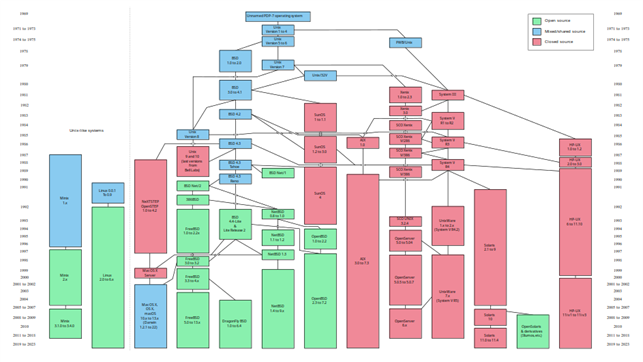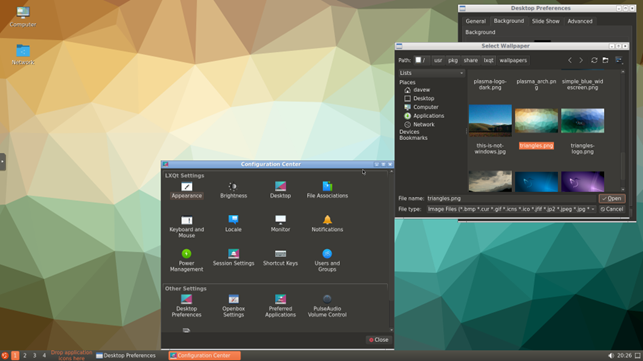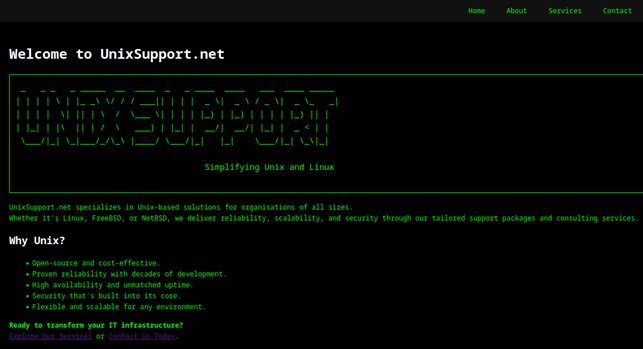I’ve always enjoyed the minimalistic bareness and non-mainstream feel of the BSD operating systems – almost how Linux felt when I first started tinkering with it in the late 1990s when it was still considered by many as a hacker’s operating system.
Even back then, although I’d heard of the BSD operating systems, my true first experience with them only started around the year 2000 when I began switching a number of our servers at a local ISP from Slackware Linux to FreeBSD and later to OpenBSD. Even then, the BSDs were considered more hardcore, secure, and stable than Linux, which was experiencing massive growth and a super-fast development cycle at the time.

For an even more comprehensive insight into the history of Unix, I encourage you to check out the very detailed map available here.
WHY NETBSD?
At DcData, we install Linux systems for customers daily and have deployed vast amounts of Linux instances, primarily using enterprise distributions, for use as servers (and sometimes desktops/notebooks). The only BSD operating system we regularly install is OPNsense, a FreeBSD-based firewall. But that alone isn’t enough to satisfy my craving for a deep BSD experience. Despite the slick benefits provided by modern-day Linux distributions, I often find myself missing the simplicity of platforms provided by Slackware Linux, FreeBSD, and OpenBSD decades ago.
Finding myself with a spare hour or two this past weekend, I decided to give in and do some BSD exploring. I grabbed the opportunity to spin up a BSD-based VM in our Cloud environment.
I decided on NetBSD since, despite 25 years of installing Linux, I had never actually gotten around to installing it!
Before embarking on this voyage, I quickly asked ChatGPT about the differences between Linux and NetBSD. Here’s what it had to say:
NetBSD prioritizes portability, clean design, and traditional Unix principles, making it ideal for diverse hardware and embedded systems. Linux, in contrast, focuses on performance, rapid development, and broad hardware support, making it dominant in enterprise, cloud, and mainstream computing. NetBSD offers a minimalist, consistent system with a permissive BSD license, while Linux provides varied distributions, extensive hardware compatibility, and corporate backing under the GPL.
That sounded great and felt like it would help scratch my itch for a fun and simplistic UNIX-like experience.
Installing NetBSD 10.1
VM Specs:
• RAM: 2GB
• CPU: 2 cores (Host type)
• NIC: VirtIO
• Storage: 10GB QCOW2-backed disk (VirtIO SCSI)
• Cloud Environment: DcData shared hosting (NVMe storage, AMD EPYC 7763 CPU)
Downloading the NetBSD 10.1 ISO (released on 16 December 2024) from NetBSD’s official site and installing it was super simple:
• Booted from the ISO, and the installation wizard started automatically.
• Choose GPT partitioning, which created an 8GB root filesystem (FFSv2) and a 2GB swap partition.
• Selected Full Installation.
• Kept the default partition sizes.
• The actual installation of software packages was completed in a staggering 57 seconds.
During the setup, I enabled the installation of binary packages and pkgsrc. Then, I configured the network, and timezone, enabled NTPd and SSHD, and added a standard user. That was it – disconnected the ISO, rebooted and logged in. The entire OS install only consumed 1.4GB of disk space.
Post-Installation Setup
After logging in, I configured a firewall and then installed a few packages to make the environment more familiar and colorful:
• bash, screen, nano, pkgin, colorls, and a few others.
I found the default shell rather plain and boring, but remembering that the PS1 shell variable may be customised, I searched and appreciated Vivek Gite’s article on customizing shell prompts, which gave me a few ideas to make my shell more exciting. After a minute or two of tinkering, I had my shell looking the way I wanted:

I then installed xdm and lxqt to experience what a desktop might look and feel like on NetBSD – why not, hey!?


To test some real-world services, I installed nginx and certbot, then created some very basic HTML for a tiny and fun website to host on my NetBSD VM. Although we have plenty of spare domains available, I felt something as cool as NetBSD deserved a similarly cool domain name, so I went ahead and registered unixsupport.net – website accessible here.

Observations & Questions
Security Features:
• NetBSD doesn’t use SELinux but does have Kauth, a framework for access control.
Container Support:
• No official Docker support, but Podman offers some compatibility.
Anti-Virus:
• While ClamAV is available, there doesn’t seem to be an officially supported real-time scanning anti-virus.
Automated Patch Management:
• How does NetBSD handle system updates over time?
Filesystem Reliability:
• How well does FFSv2 handle unexpected power failures?
• I’m a big fan of ZFS, and I’m happy to see that NetBSD does support it.
Jails/Containers/Virtualization:
• FreeBSD has Jails and Bhyve, OpenBSD has VMM, NetBSD has NVMM.
Where I See NetBSD Being Useful
Despite the very limited time spent on playing with NetBSD, I can already see its strengths and potential use cases:
Embedded Systems & Custom Hardware
• Given its extreme portability, NetBSD would shine in embedded projects, old hardware revivals, and even niche industrial systems.
Highly Secure & Hardened Environments
• Its design principles make it a solid option for security-conscious applications.
Minimalist UNIX-Like Experience
• For those who love a simple, clean, well-documented UNIX-like system, NetBSD is a great fit.
Server Environments
• With its tiny footprint and clean architecture, I can definitely see it being useful in server roles where Linux might be overkill.
Final Thoughts
My experience installing and using NetBSD was fun and refreshing. It was everything I was hoping for: lightweight, fast, clean, and well-structured. It reminded me of the early days of Linux, FreeBSD and OpenBSD. when things were simpler, and you felt closer to the operating system itself.
While I don’t see myself replacing Linux with NetBSD anytime soon in our enterprise environments, I’ll definitely be keeping a VM around to tinker with – I’m very certain that I’ll find some interesting use cases along the way.
If you’ve never tried NetBSD before, I’d definitely recommend giving it a go!
David Wilson